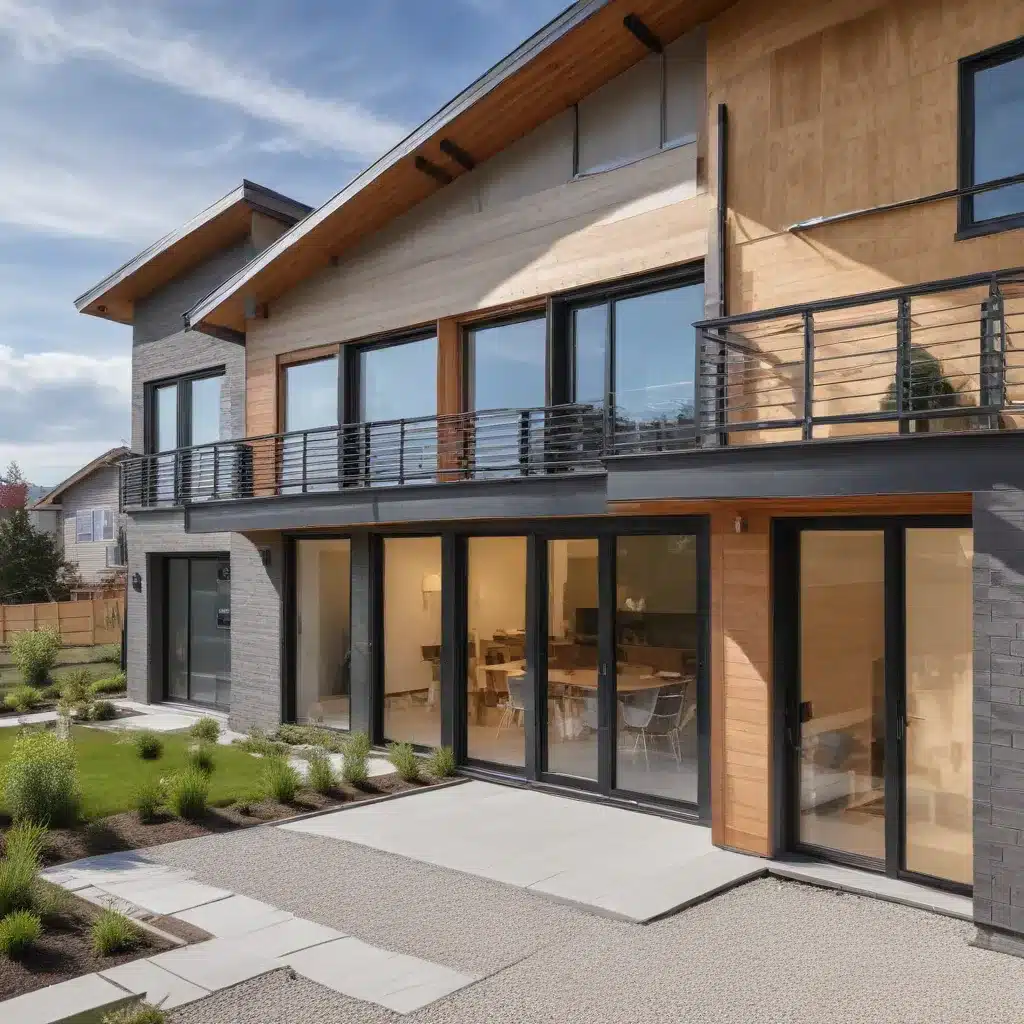
The built environment is a significant contributor to global greenhouse gas emissions, responsible for nearly 40% of total energy-related CO2 emissions worldwide. As the world transitions towards a sustainable future, the design and construction of buildings have become a crucial battleground in the fight against climate change. One innovative approach that has gained traction in Europe and beyond is the Passive House Standard, a rigorous set of design principles aimed at creating highly energy-efficient buildings that minimize the need for active heating and cooling systems.
Principles of Passive House Design
At the core of the Passive House Standard are four key principles: superinsulation, airtightness, passive solar design, and mechanical ventilation with heat recovery. Passive House buildings are engineered to maintain a comfortable interior temperature year-round through the strategic use of these design elements, rather than relying on energy-intensive HVAC systems.
Superinsulation is achieved by using thick, high-performance insulation materials in the building envelope, often exceeding typical code requirements by a significant margin. This helps to minimize heat transfer and reduce heating and cooling loads. Airtightness is ensured through meticulous sealing of the building envelope, with an air leakage rate of no more than 0.6 air changes per hour at 50 Pascals of pressure. This prevents drafts and uncontrolled air infiltration, further improving energy efficiency.
Passive solar design harnesses the power of the sun to provide natural heating and lighting. Passive House buildings are carefully oriented and fitted with large, south-facing windows to maximize solar gains during the winter months, while strategically placed overhangs, shading devices, and vegetation help to mitigate unwanted solar heat in the summer. Finally, mechanical ventilation with heat recovery systems extract stale indoor air, capture the heat, and use it to pre-warm the incoming fresh air, reducing the overall heating demand.
Energy Efficiency Strategies
The combination of these design principles results in Passive House buildings that consume up to 90% less energy for heating and cooling compared to conventional buildings. This dramatic reduction in energy use is a key step towards achieving net-zero energy in the built environment.
To further enhance energy efficiency, Passive House projects often incorporate other advanced technologies, such as high-performance windows and doors, efficient appliances and lighting, and smart home controls. Some Passive House buildings also integrate on-site renewable energy generation, such as solar photovoltaic (PV) systems, to offset the remaining energy needs and become net-zero energy or even net-positive energy buildings.
Thermal Comfort and Indoor Air Quality
Beyond energy efficiency, Passive House design prioritizes occupant comfort and well-being. The airtight, well-insulated building envelope, combined with the mechanical ventilation system, ensures a constant supply of fresh, filtered air and excellent indoor air quality. This can have significant benefits for occupant health and productivity, as well as reducing the risk of mold and other indoor air quality issues.
The passive heating and cooling strategies also help to maintain a consistent, comfortable indoor temperature, eliminating the temperature fluctuations and drafts often associated with conventional buildings. This thermal comfort can enhance occupant satisfaction and overall quality of life.
Net-Zero Energy Buildings
The ultimate goal of many Passive House projects is to achieve net-zero energy, where the building generates as much renewable energy on-site as it consumes over the course of a year. This is typically accomplished through the integration of solar PV systems or other renewable energy technologies, such as ground-source heat pumps or wind turbines.
To reach net-zero energy, Passive House buildings must be designed with a highly efficient building envelope and mechanical systems, as well as a carefully sized and integrated renewable energy system. The Passive House Standard provides a robust framework for achieving this, as the energy efficiency measures significantly reduce the overall energy demand, making it more feasible to meet the remaining needs with on-site renewable generation.
Sustainable Building Materials
In addition to energy efficiency, Passive House projects often prioritize the use of sustainable, low-embodied carbon building materials. This includes biobased materials, such as timber, straw bales, and hempcrete, as well as recycled and reclaimed materials, which can help to reduce the environmental impact of the construction process.
The Passive House Standard also encourages the use of materials with low volatile organic compound (VOC) emissions, contributing to improved indoor air quality and occupant health. By considering the entire life cycle of building materials, Passive House design helps to create truly sustainable, low-impact built environments.
Occupant Behavior and Engagement
Achieving the full potential of Passive House buildings requires not just careful design and construction, but also active engagement and education of the building occupants. Passive House certification involves a rigorous testing and verification process, including a blower door test to ensure the airtightness of the building envelope.
However, the long-term success of a Passive House project also depends on the occupants’ understanding and adherence to the building’s intended operating procedures. This includes proper use of the mechanical ventilation system, managing window openings to optimize passive solar gains, and adjusting thermostats and shading devices to maintain comfort and efficiency.
Through comprehensive user education and post-occupancy evaluation, Passive House projects can ensure that the built environment performs as designed and continues to deliver the promised energy savings and environmental benefits over time.
The Passive House Standard represents a transformative approach to sustainable building design, one that prioritizes energy efficiency, occupant comfort, and environmental responsibility. As Europe and the world continue to strive towards ambitious net-zero energy and carbon-neutral goals, the Passive House Standard offers a proven pathway for the built environment to play a leading role in this critical transition.







